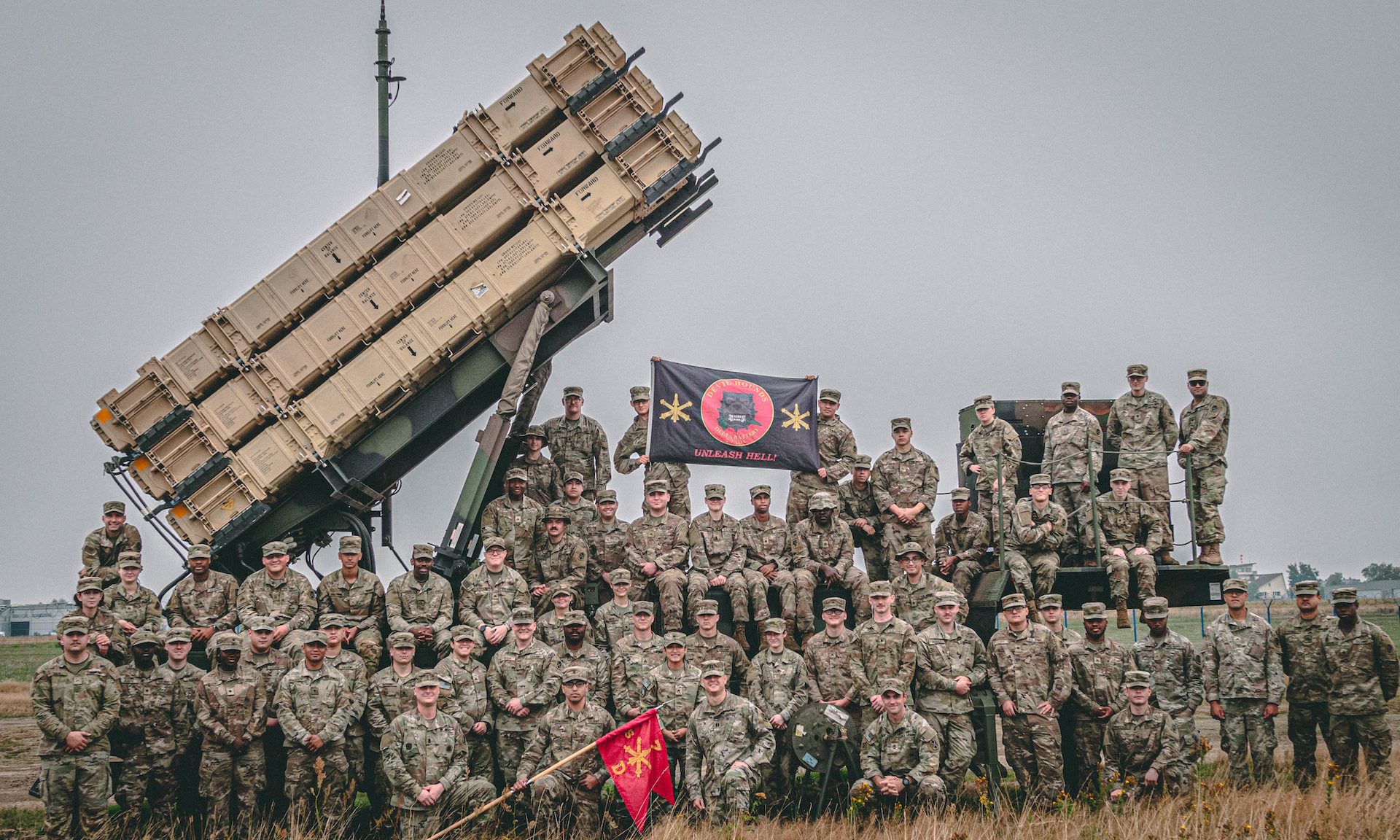

A force restructuring that shifted soldiers from other jobs into air defense more than doubled last year. In fiscal year 2024, 173 soldiers voluntarily reclassified into air defense positions, up from just 73 the year before, officials told Task & Purpose. The Army has specifically been prioritizing moving soldiers into long-range air defense positions over short-range, Col. Don Fagnan from Army Human Resource Command told Task & Purpose. The restructure targeted overcrowded military occupational specialties like cavalry scouts.
“This is our most deployed formation,” Army Chief of Staff Gen. Randy George told reporters Monday at the annual Association of the U.S. Army conference in Washington D.C. “Everybody wants U.S. Army air defense forces.”
Still, the service is just keeping up with demand for new soldiers in the field, officials say. The Army currently has 7,479 air defense positions in both short- and long-range units. To fill those slots, the Army has 7,800 soldiers currently assigned to the career field, but that number includes trainees and those between assignments.
The Army’s top officials repeatedly mentioned the strain on its air defense force in recent days at the annual Association of the U.S. Army conference but did not give specifics on how often and for how long air defenders are typically deployed or the dwell time rate for air defenders. According to Army regulations, after 30 days on deployment, active duty soldiers accrue one month they should be at their home station, which the Army calls dwell time. A spokesperson for the service said that though air defense troops are “one of the most heavily deployed” fields, releasing dwell time figures would harm “readiness and safety.”
Air defenders and their equipment have been on-call for ongoing conflicts across the world. The Army has sent air defense capabilities to troops under attack in Iraq and Syria, while patriot missile defense systems have also been sent to Ukraine. The Pentagon also announced last weekend it was sending 100 troops along with a Terminal High Altitude Area Defense battery to Israel to help with ballistic missile interception – marking the first deployment of American troops to Israel since the start of the war in Gaza. Army officials declined to elaborate on when the unit will arrive or where it is deploying from.
The proposed fiscal year 2025 budget request included $5.6 billion in integrated air and missile defense capabilities – a 77% increase from years prior which equated to new battalions for short-and-long-range air defense systems, Undersecretary Gabe Camarillo said at an AUSA panel. He also said that the Army is looking at new benefits they can offer to improve recruiting and retaining air defense positions.
Maj. Gen. Hope Rampy, head of Army Human Resources Command, said the Army has seen success offering soldiers other benefits that don’t include money.
“When we looked at incentives for accessions – lowering money, but offering training of choice and station of choice, the take rate, meaning the dollar amount, actually went down in fiscal year 2024,” Rampy said. “Retention is what’s good. It’s getting them in that’s been hard.”
‘Relieve some stress’ for air defense
To alleviate the stress, the Army is looking at where new technology can provide more air defense with fewer units and soldiers. Secretary Christine Wormuth said at AUSA that the Army is upgrading the Patriot missile interceptor systems with LTAMDS radars and using the Integrated Battle Command System for command and control “to connect a wide range of sensors across platforms.” She said that the change would “greatly increase the capacity” of patriot interceptors “to relieve some stress on our soldiers.”
“You no longer may need two or three units to do something a composite tailored force can do,” Lt. Gen. Sean Gainey, commanding general of the Army Space and Missile Defense Command. told Task & Purpose. “Therefore that’s going to relieve the stress overall on the force because we’re more tailored and focused on specific threats.”
Wormuth also said that the Army is trying to be “disciplined” with its assessments of force strain for operational deployments.
“We have to be as choosy as we can be about what we take on,” Wormuth said. “But of course, in a world that’s volatile, sometimes we have to do what we have to do.”
Earlier this month, Defense Secretary Lloyd Austin told reporters during a trip to Scott Air Force Base, Illinois that despite troop surges in the Middle East and Europe, the military still has enough air defense capability if it carefully manages deployments.
“I think we’ll be able to sustain what we’re doing, and we’ll be able to continue to take care of our troops and their families,” Austin said. “When you continually have these low density, high demand elements that are continually being asked for or employed, that tells you that you don’t have enough of those. As we look at the structure going forward, we probably need to make some adjustments.”
Austin noted that when he first entered his position, one of the first decisions he made was to invest in another Patriot battalion. “But from the time that we made that decision to when it comes alive, it’s years in the making,” he added.
The latest on Task & Purpose
- Inspired by son, father reenlists in Navy 20 years later
- National Guard major sets burpee world record
- National Guard investigates Black Hawk filmed flying low over hurricane relief site
- Why Lionel Richie’s face is on the side of a Chinook in North Carolina
- How Moody Air Force Base rode out a direct hurricane hit
